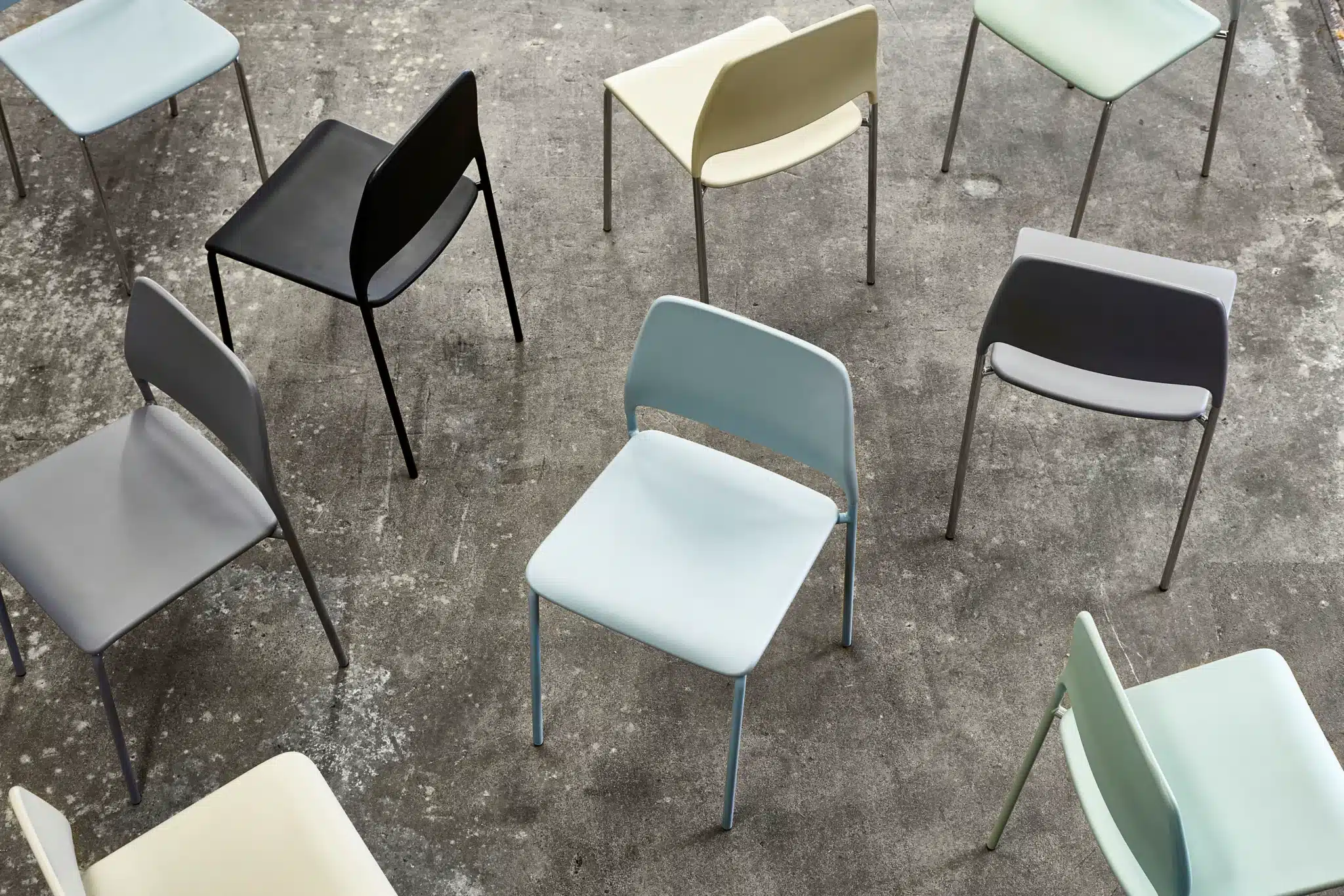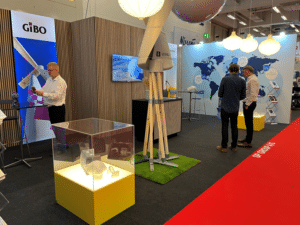Press release, January 8, 2019
Chair seats, armrests, playgrounds, support soles on construction machines, and dampers in refrigeration units. Flexible polyurethane, a soft and highly durable foamed plastic material, can be used – and is being used – in a myriad of everyday products. Designers and creators around the world are understandably crazy about the material, as it offers endless design possibilities while boasting a range of fantastic properties.
"The first thing you notice when you get the material in your hands is probably that it’s incredibly soft and pleasant to touch, partly because it can be finished with a soft-touch surface treatment," begins Michael Lind, a sales engineer at the manufacturing company Tinby A/S in Søndersø, North Funen. His job is to raise awareness of the material primarily within the furniture industry, rehabilitation and care, as well as what they call Play at Tinby, meaning playgrounds, toys, and children’s and baby products.
"And, modestly speaking, it’s going incredibly well," he states. "People are crazy about the material! Once an architect or designer has had the chance to feel the material and see examples of what it’s been used for before, a tornado of ideas starts spinning in their head about things it could surely be used for. Perhaps even products that have never been made as optimally before."
Some of the properties of flexible polyurethane, or Flex-PUR as the material is commonly called, are that it gently molds to the body, is extremely durable and can withstand daily use, has vibration and noise-dampening qualities, and is easy to clean.
All of these properties make the material particularly suitable for furniture production – especially chairs. This is especially true for parts that come into direct contact with the user. We have therefore had great success in manufacturing chairs and chair components for our customers," says Michael Lind. He also emphasizes that flexible polyurethane, especially in the furniture industry, is rapidly growing – particularly in Germany and Scandinavia, as the markets here are truly starting to discover this exciting and luxurious material.
One of Tinby's chair customers is Savir Design, a Danish furniture manufacturer that places a strong focus on sustainability and fine craftsmanship in its design and creation processes. When the company conveyed the idea for a new chair to furniture architect and designer Thomas Pedersen, it became clear that they wanted to incorporate the best features of traditional plastics, wood, and veneer with the design freedom offered by PUR material. The chair was to introduce something new in terms of expression, design, and seating comfort, and the result was the BEAT Chair – a chair with a distinctive personality in its recognizable, organic form language. It has also been approved according to EN1022 and EN16139 L2 "extreme use," indicating that it is especially suitable for use in places such as airports and hospitals.
“The BEAT Chair has become everything we dreamed of. We had a great Danish design that needed to be produced in the best quality and at the right price – and we were recommended Tinby. We got in touch with them, spoke the same language – both figuratively and literally – and quickly entered into a development collaboration for the production of the PUR seat and backrest for The BEAT Chair. Today, we have a beautiful chair made from a fantastic material, certified for use in many different environments, and we are already experiencing great demand for it,” says Karsten Andersen, partner at Savir Design.




